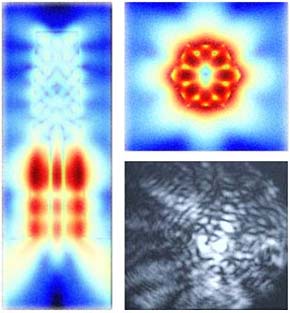Quantum computing isn’t here yet as computers based upon silicon chips are still today’s standard. Bridging the pathway however may be nanolasers on silicon chips developed by researchers at UC Berkeley in Northern California.
The engineers at the university are using III-V materials to create LED’s and lasers. The process they are using is also scalable for mass production since similar technology is already being used to produce thin film solar cells and LED’s.

Nanolasers
With the use of nanotechnology the scientists are creating nanopillars upon the silicon chips to help quickly distribute the near infrared light. According to UC Berkeley, “Once the nanopillar was made, the researchers showed that it could generate near infrared laser light – a wavelength of about 950 nanometers – at room temperature. The hexagonal geometry dictated by the crystal structure of the nanopillars creates a new, efficient, light-trapping optical cavity. Light circulates up and down the structure in a helical fashion and amplifies via this optical feedback mechanism.
“The unique approach of growing nanolasers directly onto silicon could lead to highly efficient silicon photonics, the researchers said. They noted that the miniscule dimensions of the nanopillars – smaller than one wavelength on each side, in some cases – make it possible to pack them into small spaces with the added benefit of consuming very little energy.”
This breakthrough could create an optoelectronics revolution within the industry leading to disruptive technology not only in supercomputer and super-networking and super-telecommunications as well.
If you would like to see how future computers will change your life check out this page.
Sorry, the comment form is closed at this time.